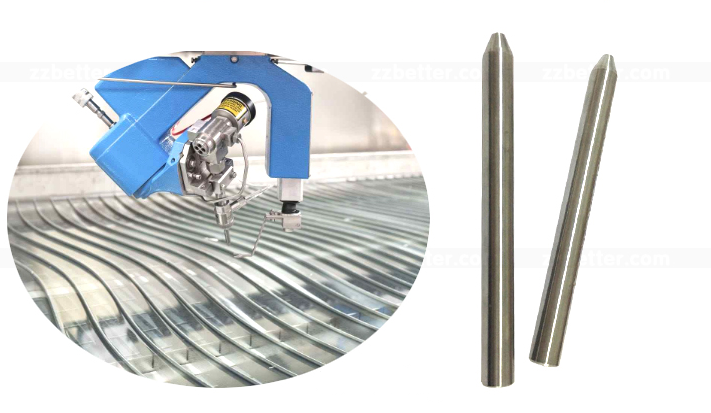The Attention Points for the Water Jet Cutting the Glass
The Attention Points for the Water Jet Cutting Glass

Waterjet cutting systems can cut nearly every material, but different materials require specific waterjet cutting systems. There are many factors that determine which type of water jet cutting system to use: the thickness of the material, its strength, whether the material is layered, the complexity of the design, etc.
So what are the attention points for the water jet cutting the glass?
1. Abrasives
A water jet system that uses only pure water is great for easy-to-cut materials, but adding abrasives can increase cutting power. For cutting glass, it recommends using abrasives. Be sure to use a fine mesh abrasive because glass is especially easy to fragile. Using a 100~150 mesh size gives smoother cutting results with less micro debris along the cut edges.
2. Fixture
When cutting glass with a waterjet cutting system, it is crucial to ensure that there is a proper fixture underneath the glass to prevent breakage. The fixture should be flat, even, and supportive, but soft enough so that the water jet doesn't bounce back into the glass. Sprinkler bricks are a great option. Depending on the situation, you can also use clamps, weights, and tape.
3. Pressure and orifice hole size
Cutting glass requires high pressure (around 60,000 psi) and extreme precision. The correct orifice size for cutting glass using a water jet cutting system is typically 0.007 – 0.010”(0.18~0.25mm) and nozzle size is 0.030 – 0.035”(0.76~0.91mm).
4. Abrasive wire
If your abrasive wire sags, it will interfere with the flow of the abrasive into the material. Then it will suddenly blast abrasive under high pressure. So if your wire is prone to sagging, consider switching to a shorter abrasive wire.
5. Punching pressure
When cutting glass that high pressure is the key factor. Start with the punching pressure of the pump so that the high-pressure water hits the material as the abrasive begins to flow.
6. Avoid rapid temperature changes
It could break when tossing a hot glass dish straight from the oven into a sink full of cold water. Glass is sensitive to rapid temperature changes, so when cutting glass with a waterjet cutting system, a slow transition between a hot water tank and cold air or cold water is important.
7. Perforating holes before cutting
The last way to prevent the glass from shattering is to finish perforating the glass before cutting it. Doing so will maximize the consistency of the pipeline. Once all the perforations are done, cut with high pressure (remember to slowly increase the pump pressure!). For best results, make sure to start your cut inside one of the holes you've punched.
8. Cutting height
Water cutting uses water pressure, the cutting outlet pressure is the largest and then decreases sharply, and the glass often has a certain thickness, if there is a certain distance between the glass and the water jet cutter head, it will affect the cutting effect of the water jet. The water jet-cutting glass should control the distance between the water jet-cutting tube and the glass. Generally, the anti-collision braking distance will be set to 2CM.
9. Non-tempered glass
It is important to note that never attempt to cut tempered glass with a water jet tempered glass is designed to shatter when disturbed. Non-tempered glass can be well cut with a water jet if you take a few critical steps. Follow these tips for significantly superior results.

If you are interested in tungsten carbide products and want more information and details, you can CONTACT US by phone or mail at the left, or SEND US MAIL at the bottom of the page.





















